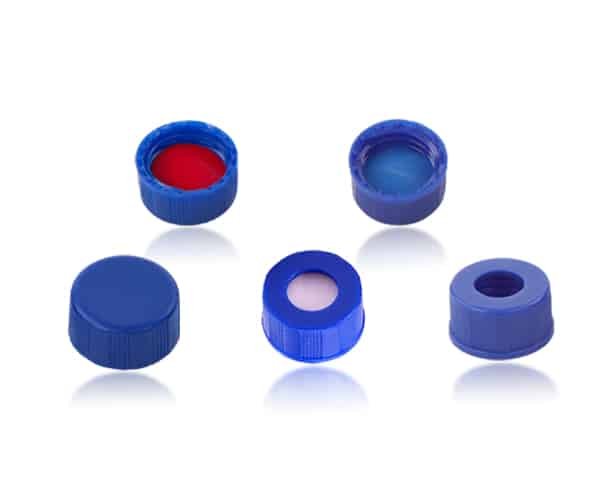Introduction
When working with small-volume samples in HPLC (High-Performance Liquid Chromatography), one of the biggest challenges is ensuring maximum sample recovery while maintaining injection accuracy. This is where vial inserts come into play. Designed to fit inside standard vials, these inserts help reduce dead volume, concentrate samples, and enhance injection precision.
Vial inserts are particularly valuable when working with precious or limited samples, as they ensure that the sample is properly positioned for the autosampler needle to access. Without them, small volumes might spread out too much in the vial, leading to sample loss or inaccurate injections.
In this article, we’ll explore the different types of vial inserts, how to choose the right material, and best practices to maximize sample recovery. Plus, we’ll tackle some common issues and how to troubleshoot them effectively. Let’s dive into the world of vial inserts and see how they can transform your HPLC workflow.
What Are Vial Inserts and Why Use Them?
Vial inserts are small containers designed to fit snugly inside HPLC vials. Their primary function is to minimize dead volume and concentrate small samples at the vial’s base. This makes it easier for the autosampler needle to reach the sample, significantly reducing sample waste and improving injection precision.
Why Use Vial Inserts?
- Enhanced Sample Recovery
- Without an insert, tiny sample volumes may spread out at the bottom of the vial, making it difficult for the needle to draw the entire sample.
- Inserts help pool the sample into a smaller area, minimizing residual volume and maximizing recovery.
- Improved Injection Accuracy
- By concentrating the sample, inserts ensure that the autosampler needle precisely hits the sample volume.
- This reduces variability between injections, leading to consistent and reproducible results.
- Reduced Sample Loss
- Minimizing dead volume means that even a small volume of sample can be accurately injected without being wasted or left behind.
- Versatility with Different Volume Needs
- Inserts are available in various sizes and shapes to accommodate different sample volumes and vial types.
Ideal Applications for Vial Inserts
- Low-Volume or Precious Samples: When every microliter counts.
- Concentrated Standards: To ensure uniform injection.
- Sensitive Analytes: To avoid evaporation or contamination.
Have you tried using vial inserts in your HPLC workflow? What kind of improvements did you notice?
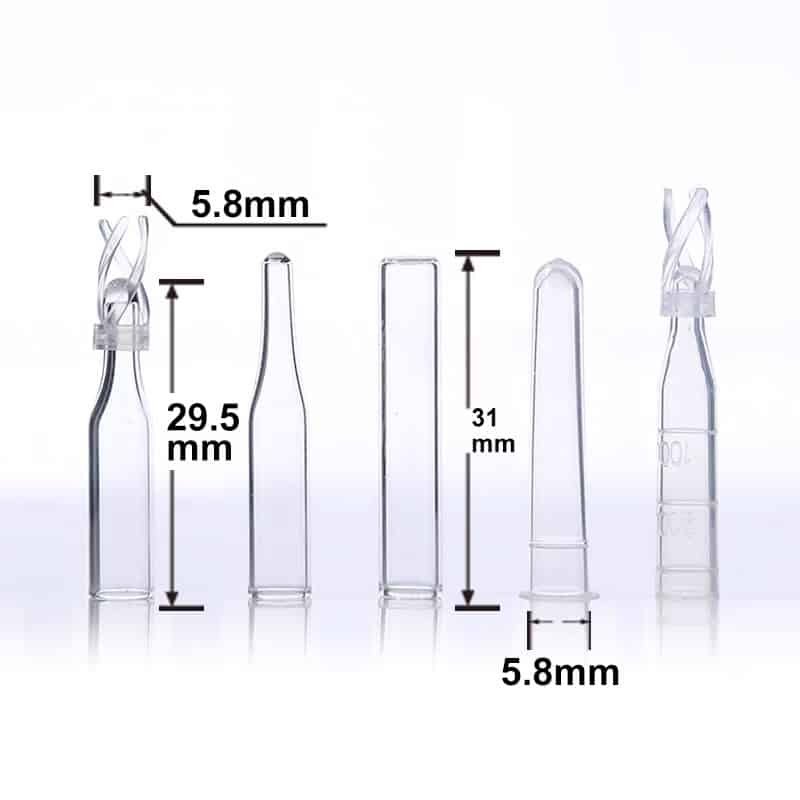
Types of Inserts: Flat Bottom, Conical, and Spring-Loaded
Not all vial inserts are the same. Choosing the right insert shape can dramatically impact sample recovery and injection accuracy. Here’s a breakdown of the most common types:
Flat Bottom Inserts
Flat bottom inserts are designed to sit evenly at the bottom of the vial, creating a stable base for the sample.
Advantages:
- Ideal for large-volume samples or when complete sample withdrawal is not critical.
- Compatible with wide-opening vials, making manual pipetting easier.
- Reduces air bubbles during sample introduction.
Disadvantages:
- May leave residual volume at the bottom, especially if the sample volume is low.
- Not suitable for ultra-low-volume injections.
Conical Inserts
Conical inserts taper to a narrow point at the bottom, concentrating the sample at a single point.
Advantages:
- Excellent for small volume samples, as the conical shape ensures complete recovery.
- Minimizes dead volume and positions the sample precisely for injection.
Disadvantages:
- Can be more difficult to pipette manually due to the narrow tip.
- Sometimes prone to air bubble formation if not filled properly.
Spring-Loaded Inserts
Spring-loaded inserts have a spring mechanism at the bottom that keeps the insert firmly in place, even when the vial is handled or moved.
Advantages:
- Prevents the insert from floating or moving, maintaining consistent sample positioning.
- Ideal for high-throughput labs or automated systems.
Disadvantages:
- Typically more expensive than standard flat or conical inserts.
- Additional handling precautions are needed to avoid dislodging the spring.
Which type of vial insert have you found most effective in your lab?
Choosing the Right Insert Material for Your Application
The choice between glass and plastic inserts can significantly affect sample stability, compatibility, and accuracy. Let’s compare the two:
Glass Inserts
Glass is the most chemically inert and non-reactive material available for vial inserts.
Advantages:
- Excellent chemical resistance to organic solvents and acids.
- Ideal for sensitive or reactive compounds.
- Maintains sample integrity over long periods.
Disadvantages:
- Can be fragile, especially during cleaning or handling.
- More expensive than plastic alternatives.
Plastic Inserts
Typically made from polypropylene (PP) or polyethylene (PE), plastic inserts offer durability and affordability.
Advantages:
- Shatterproof and less prone to breaking.
- Cost-effective for high-throughput environments.
- Suitable for aqueous samples or less aggressive solvents.
Disadvantages:
- Potential for chemical reactions with organic solvents.
- Can adsorb compounds, compromising analytical accuracy.
Choosing the Right Material:
- Use glass inserts for organic solvents and volatile samples.
- Use plastic inserts for water-based or non-reactive solutions.
Maximizing Sample Recovery: Best Practices
To get the most out of your vial inserts, follow these best practices to maximize sample recovery and injection accuracy:
1. Pre-Rinse the Insert
- Always rinse inserts with the same solvent as your sample to reduce contamination.
- This practice minimizes sample loss caused by solvent residue.
2. Use Low Volume Inserts for Small Samples
- For sample volumes under 200 µL, use inserts specifically designed for microscale analysis.
- Conical inserts are typically the best option for these applications.
3. Avoid Overfilling
- Never exceed the maximum volume capacity of the insert. Overfilling can lead to spillover and contamination.
- Leave a small headspace to accommodate thermal expansion or slight movements.
4. Regular Maintenance and Inspection
- Routinely inspect inserts for cracks, residue, or discoloration that could compromise sample integrity.
- Replace worn-out or contaminated inserts immediately.
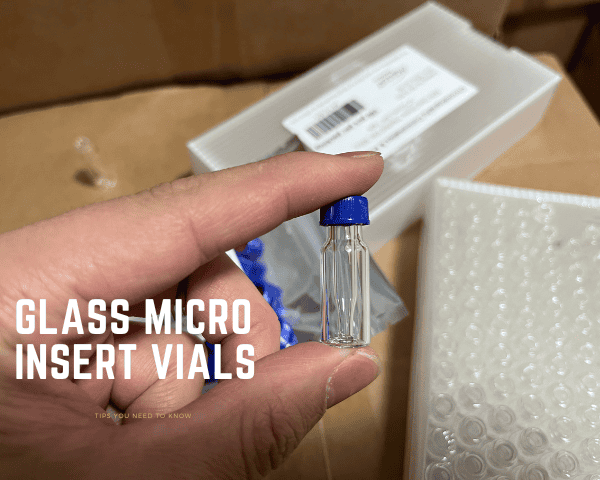

Troubleshooting Issues with Vial Inserts
Even with careful use, problems can still arise. Here’s how to handle some common issues:
1. Liquid Retention in the Insert
- Issue: Sample droplets stick to the insert walls, causing incomplete injection.
- Solution: Use silanized inserts to reduce surface tension and enhance sample flow.
2. Needle Damage During Injection
- Issue: The autosampler needle hits the bottom of a conical insert, bending or breaking the tip.
- Solution: Adjust the needle depth settings in the autosampler software.
3. Air Bubbles at the Tip
- Issue: Trapped air affects injection precision.
- Solution: Gently tap the vial or use centrifugation to eliminate bubbles.
Conclusion
Vial inserts are an essential tool for maximizing sample recovery and maintaining injection accuracy in HPLC workflows. By choosing the right insert shape and material, and following best practices for handling and maintenance, you can significantly improve data quality and efficiency. Don’t overlook the small details—optimizing your vial inserts can make a big difference in your analytical results.
FAQ
- What type of vial insert is best for low-volume samples?
- Conical inserts are ideal for small-volume samples, as they minimize residual volume.
- Are plastic inserts compatible with all solvents?
- No, they are not suitable for aggressive organic solvents. Use glass inserts for better chemical resistance.
- Why are spring-loaded inserts beneficial?
- They keep the insert securely positioned, preventing movement during autosampler operations.
- Can vial inserts affect injection accuracy?
- Yes, improper fit or residual liquid can affect accuracy. Always choose the right size and material.
- How can I prevent air bubbles in inserts?
- Tap the vial gently or use a centrifuge to remove trapped air before injection.
The choice between glass and plastic inserts can significantly affect sample stability, compatibility, and accuracy. Let’s compare the two:
Glass Inserts
Glass is the most chemically inert and non-reactive material available for vial inserts.
Advantages:
- Excellent chemical resistance to organic solvents and acids.
- Ideal for sensitive or reactive compounds.
- Maintains sample integrity over long periods.
Disadvantages:
- Can be fragile, especially during cleaning or handling.
- More expensive than plastic alternatives.
Plastic Inserts
Typically made from polypropylene (PP) or polyethylene (PE), plastic inserts offer durability and affordability.
Advantages:
- Shatterproof and less prone to breaking.
- Cost-effective for high-throughput environments.
- Suitable for aqueous samples or less aggressive solvents.
Disadvantages:
- Potential for chemical reactions with organic solvents.
- Can adsorb compounds, compromising analytical accuracy.
Choosing the Right Material:
- Use glass inserts for organic solvents and volatile samples.
- Use plastic inserts for water-based or non-reactive solutions.
Maximizing Sample Recovery: Best Practices
To get the most out of your vial inserts, follow these best practices to maximize sample recovery and injection accuracy:
1. Pre-Rinse the Insert
- Always rinse inserts with the same solvent as your sample to reduce contamination.
- This practice minimizes sample loss caused by solvent residue.
2. Use Low Volume Inserts for Small Samples
- For sample volumes under 200 µL, use inserts specifically designed for microscale analysis.
- Conical inserts are typically the best option for these applications.
3. Avoid Overfilling
- Never exceed the maximum volume capacity of the insert. Overfilling can lead to spillover and contamination.
- Leave a small headspace to accommodate thermal expansion or slight movements.
4. Regular Maintenance and Inspection
- Routinely inspect inserts for cracks, residue, or discoloration that could compromise sample integrity.
- Replace worn-out or contaminated inserts immediately.
Troubleshooting Issues with Vial Inserts
Even with careful use, problems can still arise. Here’s how to handle some common issues:
1. Liquid Retention in the Insert
- Issue: Sample droplets stick to the insert walls, causing incomplete injection.
- Solution: Use silanized inserts to reduce surface tension and enhance sample flow.
2. Needle Damage During Injection
- Issue: The autosampler needle hits the bottom of a conical insert, bending or breaking the tip.
- Solution: Adjust the needle depth settings in the autosampler software.
3. Air Bubbles at the Tip
- Issue: Trapped air affects injection precision.
- Solution: Gently tap the vial or use centrifugation to eliminate bubbles.
Conclusion
Vial inserts are an essential tool for maximizing sample recovery and maintaining injection accuracy in HPLC workflows. By choosing the right insert shape and material, and following best practices for handling and maintenance, you can significantly improve data quality and efficiency. Don’t overlook the small details—optimizing your vial inserts can make a big difference in your analytical results.
Mastelf, with over 13 years of experience in chromatography vials since established in 2011, we can help you find the exact vials you need for your applications.
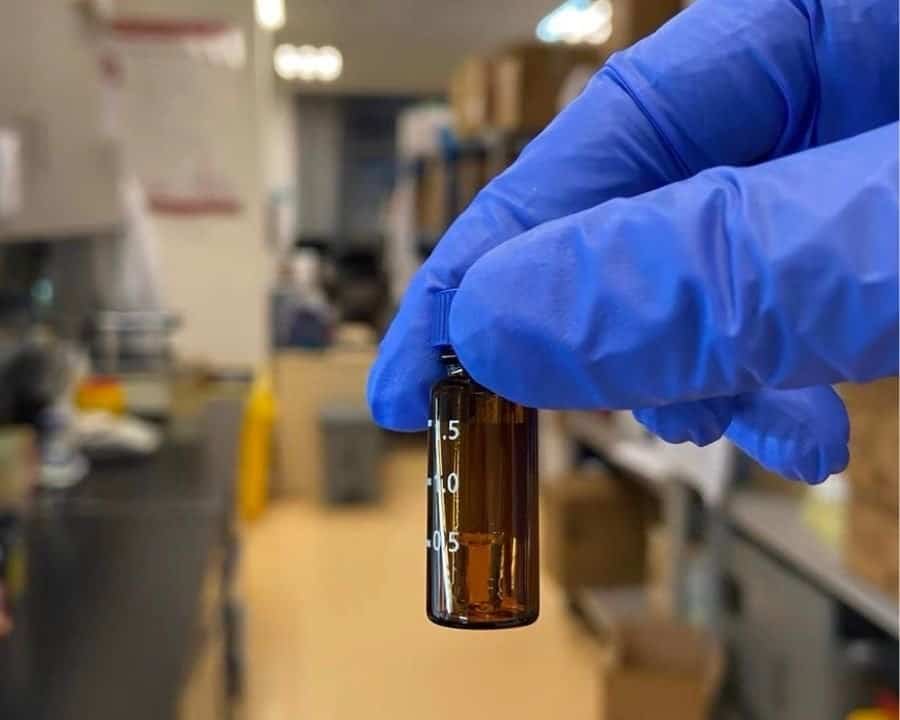

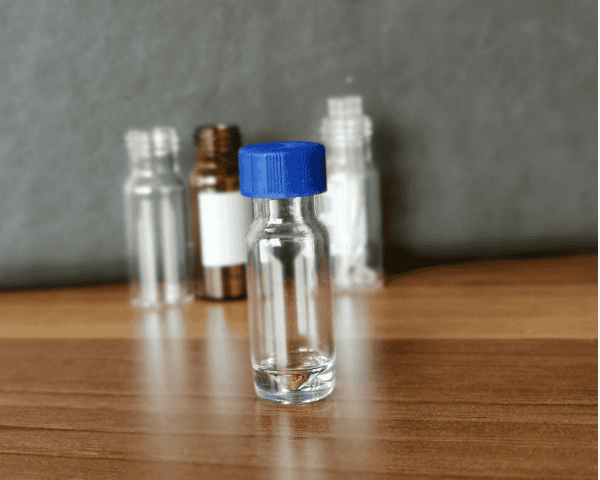
Our expertise ensures that you get reliable and precise products tailored to your specific requirements. Whether you’re in pharmaceuticals, research, or any other industry relying on HPLC, we understand your needs and are here to support you in making the right purchase.
Reach out to Mastelf, and let us assist you in procuring the perfect vials for your work.
FAQ
- What type of vial insert is best for low-volume samples?
- Conical inserts are ideal for small-volume samples, as they minimize residual volume.
- Are plastic inserts compatible with all solvents?
- No, they are not suitable for aggressive organic solvents. Use glass inserts for better chemical resistance.
- Why are spring-loaded inserts beneficial?
- They keep the insert securely positioned, preventing movement during autosampler operations.
- Can vial inserts affect injection accuracy?
- Yes, improper fit or residual liquid can affect accuracy. Always choose the right size and material.
- How can I prevent air bubbles in inserts?
- Tap the vial gently or use a centrifuge to remove trapped air before injection.




